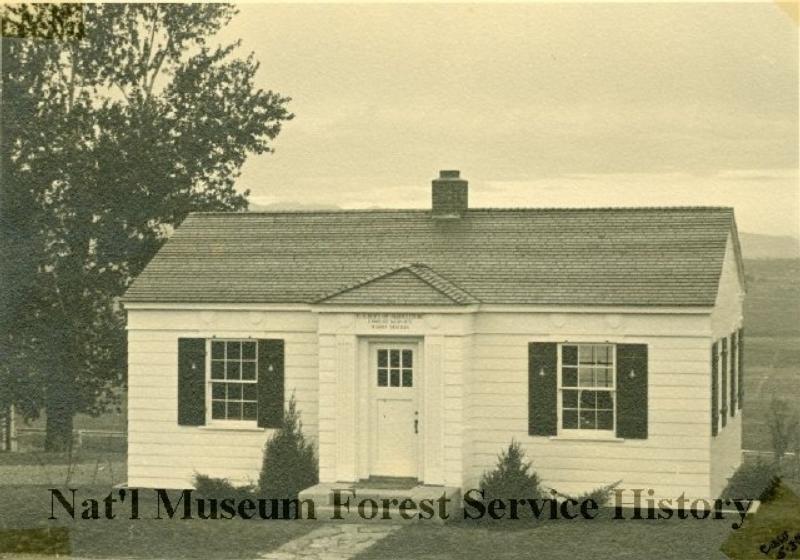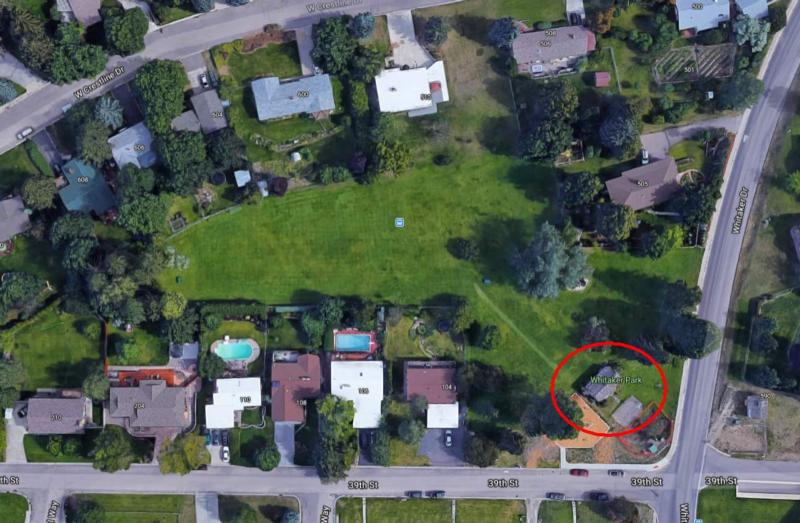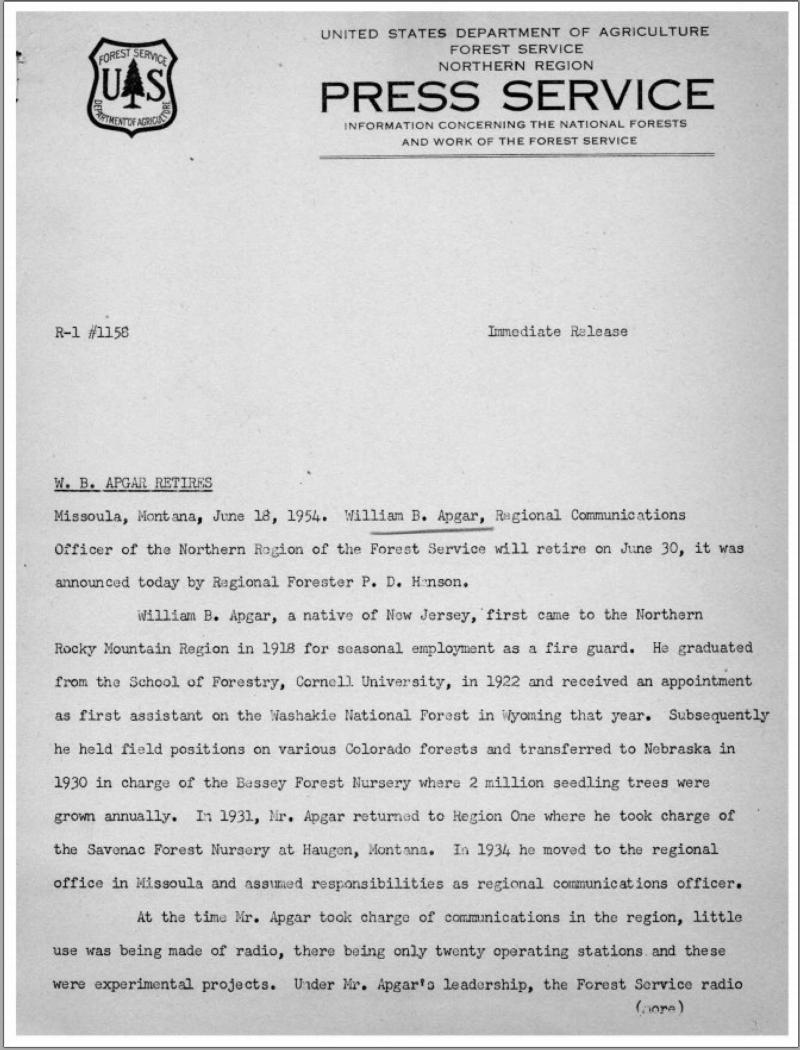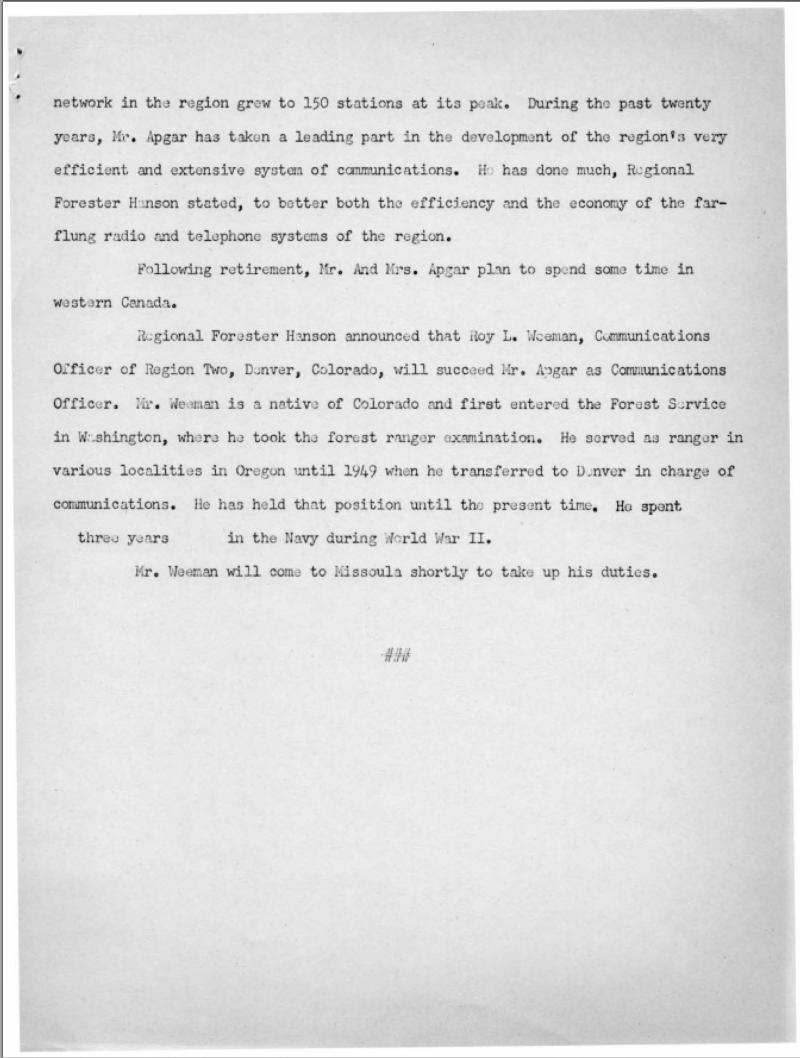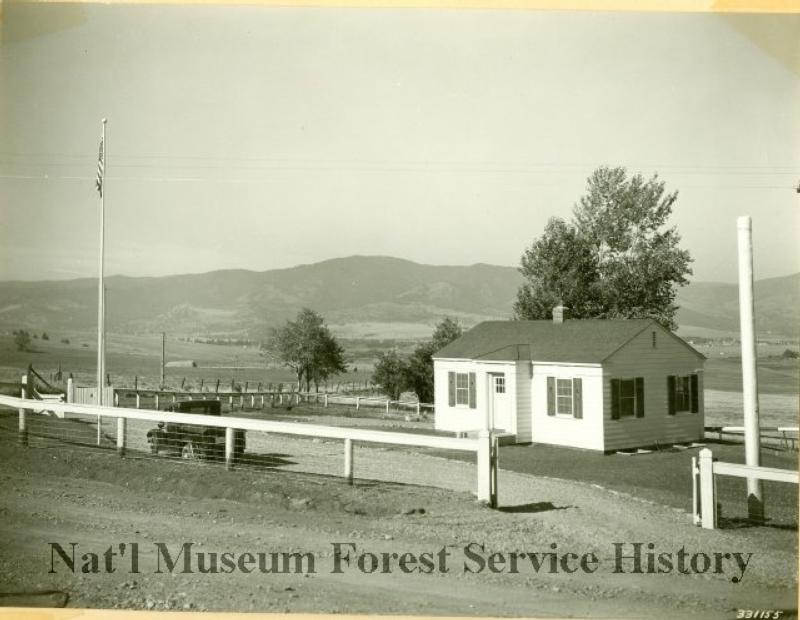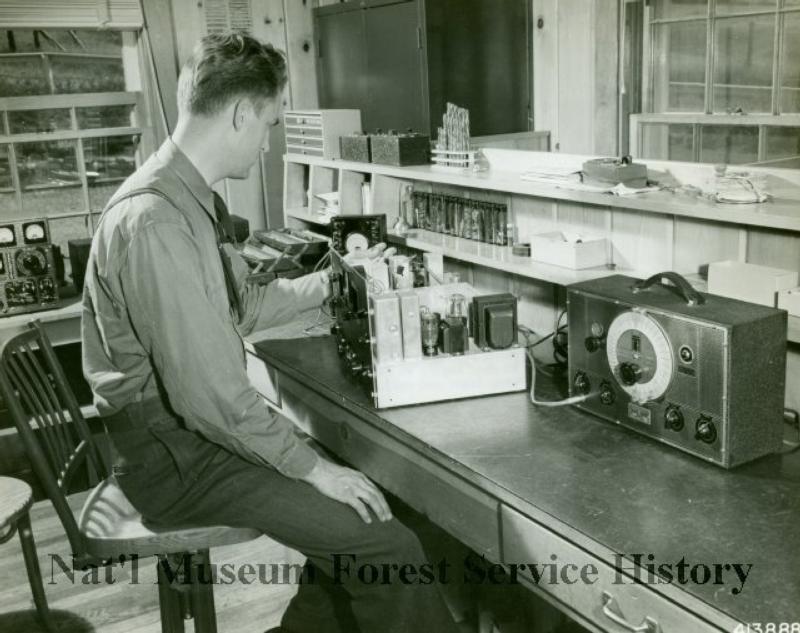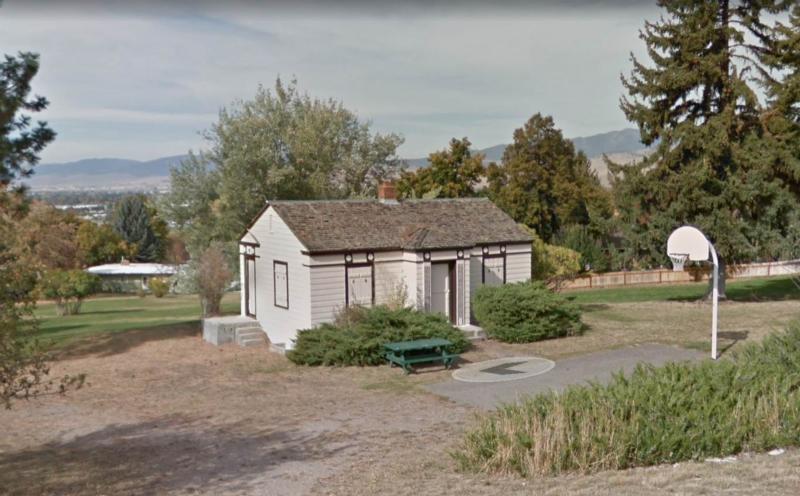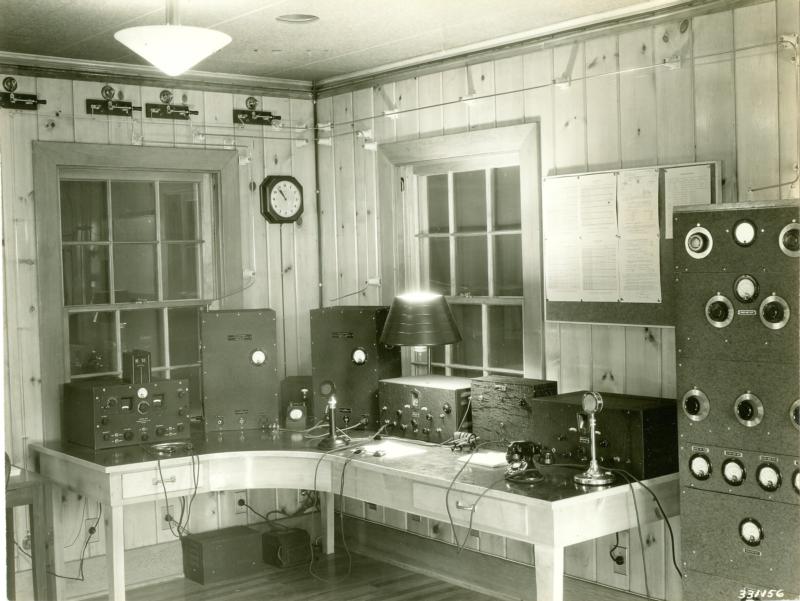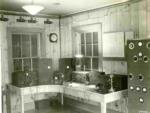
Posted By: Robert Nickels (ranickels) Posted: 02/11/2021 Historic 02/11/2021 |
KBCX - US Forest Service Regional Radiofrom Missoula Montana to the northwest |
|
Hams, especially those who enjoy operating AM and QRP should be aware of the pioneering efforts of the US Forest Service to adopt and advance the radio art in the early decades of the 20th century. The history of radio in the USFS literally takes a book to cover, but an interesting example can be found in station KBCX, the Region 1 Radio Operations Center in Missoula Montana. It was the creation of William B. Apgar, who held the amateur call W7CRU, but who never thought of himself as "a communications man", but rather as "a ranger who used communications to get a job done". For all that, he was skilled in the radio arts and from his early involvement in radio field testing to the 20 years he held the position of Regional Communications Officer, he was the "voice of the Ranger" and frequently knocked heads with the USFS radio laboratory in Portland about what worked on the fireline, and what just looked good on paper. He also would have agreed with the claim that "life is too short for QRP" as he advocated the use of higher powered transmitters at key locations to ensure reliable day to day communications for administrative purposes. At it's peak, the Forest Service relied on over 12,650 miles of hard-to-maintain telephone lines, which under Apgar's influence was reduced to 1,164 by 1977 and ultimately to zero. While he was described at "a nice guy", he clearly favored a top down approach that emphasized efficiency and centralization (with himself at the top, naturally!) Apgar's biggest footprint can be found in the Region 1 station at Missoula, MT, which he described as a "beautiful location" for regional communications. The building was put up in the 1930s by the Civilian Conservation Corps and was divided into two sections. One room was the "radio shack", the other was a radio maintenence shop - both are shown in the images here. It was not a large building - the living accommodations for Apgar's crew were in the basement. One can only imagine how clear of interference and manmade QRN the bands were at that time which was no doubt part of the reason that transmissions throughout the region were described as "clear and suffered little interference". The main transmitter seen at the right in the photo was Apgar's own design and other than being capable of "something over 100 watts" which enabled communications on 100 meters with all the national forests in the Northern Region, not much else is known. It was based on a design he'd previously used for a base station at Ft. Missoula and the University of Montana. USFS communications at the time used 3.0 MHz (100 meters) although the advantages of was was then called "UHF" for portable operation in the 30-40 MHz range (AM mode)s caused fireline operations to shift to that band by 1940. As commercial FM radios became available from Motorola, GE, RCA, and others in the post-war era, the Forest Service adopted that technology and ceased designing and contracting for it's own radios to be built by a handful of Pacific Northewest companies that had helped deploy radio communications throughout the 1930s. Apgar set up his Missoula station with the most modern equipment, selecting two of Hammarlund's Comet Pro receivers - one being the newer version 4 which had a crystal filter for selectivity. This 1936 photo shows a more recent model Hammarlund Super Pro with a crystal filter option had been added, reflecting continued investment. There were two type "M" transmitters (a USFS designed "M"edium power transmitter with 20 watts output). A National SW-3 and it's doghouse power supply can also be seen - perhaps it was intended as a back-up receiver. It appears that an array of antennas could be selected for each transmitter, and clearly emphasis was placed on neat housekeeping (at least while the photographer was present!) From 1932 until his retirement in 1954, William Apgar had a major influence on the implementation of radio in the Forest Service. He favored a centralized approach which ruffled some feathers in other offices. For example, his policy of gathering up all radios from the field for an annual inspection at the Missoula shop did not sit well with some forest supervisors, who claimed the radios often "came back in worse shape" and the annual round-up interfered with their need for communications with forest camps and work crews. At least one supervisor hired his own radio maintenance man in defiance of Apgar's policy, and since email had not yet been invented, the issue was elevated through an exchange of heated letters and memos. In the end, the field supervisor won, and retained his radio man - who did not retire from the forest service until 1979 after 43 years of service. But to show there were no hard feelings, the radio man sent then-retired Bill Apgar a Christmas note saying that not only were their differences of 1936 forgotten, but their shared vision for radio had been fully implemented as the last Forest Service telephone line had been replaced by radio. But William Apgar's methods really laid the groundwork for regional radio networks with high powered stations in the office of each forest supervisor as an administrative tool for the daily business of the Forest Service. Adding portable sets to ranger stations, lookouts, and guard locations enabled the USFS to achieve almost instant communications with all manned locations throughout their domain when needed. All this was done in the 1930s using equipment that would seem primitive by todays standards and relied heavilly on low power AM for voice communications (despite summertime QRN!) across a regional network that extended to 150 stations at its peak. While so much infrastructure of years past has been demolished, a bright note to this story is that the little radio station on what was then the outskirts of Missoula was spared the bulldozer. The building and surrounding acreage (once the antenna farm) was located on Whitaker St., and was eventually donated in 1975 to the city of Missoula for use as a neighborhood park (Whitaker Park) and it still exists today with a small playground and open field. While the City of Missoula is engaged in "planning" as all municipalities feel the need to do, they seem to be committed to "finding a new home for the building and interpreting it's history on the site" (which sounds like it may someday be moved, but hopefully not destroyed). Wouldn't it be great if a local ham club were to restore the KBCX building as a museum to communications technology?
|
|
Related Images
Click on the image title or on the image itself to open the full-sized image in a separate window.Latest Articles
|
Crystal Replacement
Posted: 02/38/2024
Comments: 0 |
How good can a crummy receiver be?
Hundreds of different simple SDR receivers have been designed around Dan Tayloe's Quadrature Sampling Detector or QSD. Mine add nothing to the state of the art, and in fact subtract things, as I like minimalist solutions and the QSD is right in that sweet spot. Following the evolution of Tayloe's design I delete the resistors in series with the sample lines for inst... READ MORE |

Technical
Posted: 02/37/2024
Comments: 0 |
What's in a number (3253)?
The FST3253 dual four-to-one mux/demux IC has long been used as a "Tayloe Detector" or QSD (and QSE) in low-cost SDRs. They provide incredible performance for such a simple circuit, converting RF to baseband IQ with low loss and the ultimate in simplicity. Unfortunately the original FST3253 part has become obsolete and while substitutes are available, this is where the... READ MORE |

Vintage Ham Radio
Posted: 02/32/2024
Comments: 0 |
The Stancor 10P Transmitter
There weren't really many commercial transmitters in the 1930s as most hams built their own. But many of the ones that were offered came from the transformer companies who had two chances to profit. First, from those who would buy the kit, and two, from those would would see it in the (free) booklets the companies provided to their distributors who would then sell the iron to ham... READ MORE |

Vintage Ham Radio
Posted: 12/355/2023
Comments: 0 |
The Care and Feeding of the EF Johnson Courier amplifier
The EF Johnson "Courier" is a grid-driven amplifier using two 811A tubes. Switching is provided for operating in either class C for CW or as a class B linear amplifier for AM or SSB. Rated power is 500 watts input for CW, 500 watts PEP input for SSB, and 200 watts input for double-sideband AM with carrier. Since all amateur power levels were meas... READ MORE |

Historic
Posted: 11/329/2023
Comments: 0 |
TV Duplexer
Some things are interesting, even if totally useless nowadays. Such is the case with the Philco 426-3034 Crossover Kit for UHF TV. What the heck is that? Well, back in the late 50s, UHF television stations operating on channels 14-83 started to appear in many areas of the US where viewers had a VHF-only TV antenna, and in many cases an externa UHF converter was... READ MORE |

Crystal Replacement
Posted: 11/327/2023
Comments: 0 |
Replacing failed crystals
For decades, quartz crystals were used everywhere a stable frequency source was needed, even in some applications that depended on overtone (harmonic) behavior into the VHF range. These crystals were less stable and more dependent on circuit parameters that fundamental types and thus more problematic. Such was the case with the 94 MHz crystal in the 2 meter converter ... READ MORE |

Historic
Posted: 11/315/2023
Comments: 0 |
My Own Ham Radio Story by W9RAN
Everyone has a story of how they got involved in ham radio - this is mine. It started much earlier, including receiving a Knight Kit Span Master shortwave radio for Christmas in about 1963, at age 12. I'll never forget the night my dad and I finished building it and I wanted to try it out. It came with a 50 ft. antenna which was still coiled up - but ... READ MORE |

Technical
Posted: 09/267/2023
Comments: 0 |
Hot to simulate vacuum tubes in LTSpice
LTSice is a powerful simulation tool that is provided free by Linear Technology Corp. It comes with a complete library of passive and common analog solid-state components but if you want to use it to simulate vacuum tubes, it doesen't work as-is. Even though triode and pentode symbols can be found in the "Misc" folder, they are just schematic symbols and... READ MORE |
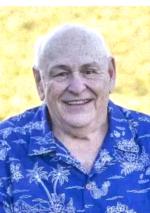
Friends Remembered
Posted: 07/208/2023
Comments: 0 |
Merv Schweigert, K9FD (SK)
Comments from Robert Nickels W9RAN, July 27, 2023: There is nothing worse for a ham radio operator than to see a beloved friends callsign with the letters "SK" behind them. Yet sadly, that's what happened on July 23, 2023, when I learned of the passsing of Merv Schweigert, K9FD. While many of our ham radio interests were different - Me... READ MORE |
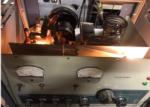
Vintage Ham Radio
Posted: 01/19/2023
Comments: 0 |
"Winter Projects"
I know many of us who enjoy restoring and repairing vintage gear look forward to winter when there is less competition for time and energy, and a chance to really make a dent in our "to be fixed" piles. A couple of years ago I set time aside for "Heathkit Singlebander Week" and went through every one of them I had, with the result that they're all working ... READ MORE |
